Navigating the complexities of football can be challenging, especially when it comes to understanding the different types of blocks. This comprehensive guide breaks down the various blocking techniques used in football, enhancing your understanding and appreciation for the offensive line. At CAUHOI2025.UK.COM, we aim to provide clear and reliable information to help you grasp the nuances of the game. This article covers everything from trap blocks to cut blocks, providing detailed explanations and visual aids. Enhance your football IQ with us and discover effective blocking strategies.
Understanding Blocking in Football
In American football, a “block” refers to a legal maneuver by an offensive player to obstruct a defensive player. The primary goal is to create space for the ball carrier or to protect the quarterback. Effective blocking is crucial for a successful offense, as it allows plays to develop and prevents the defense from disrupting the play.
Why Blocking Matters
Blocking is the foundation of any successful offensive play. Without effective blocks, running backs have no lanes to run through, and quarterbacks have no time to throw. The offensive line, consisting of centers, guards, and tackles, is primarily responsible for executing these blocks. Their ability to create and maintain these blocks directly impacts the offense’s ability to gain yards and score points.
Legal vs. Illegal Blocks
It’s important to distinguish between legal and illegal blocks. Legal blocks must occur within specific parameters, such as not holding (illegally grabbing and impeding a player) or blocking below the waist (except in certain circumstances). Illegal blocks result in penalties that can set the offense back and disrupt the flow of the game. Understanding these rules is crucial for both players and fans.
Now, let’s dive into the specifics of various blocking techniques used in football.
1. Trap Block
Definition: A trap block involves leaving a defensive lineman unblocked initially and then “trapping” him with another lineman coming from a different angle.
The offensive lineman or fullback aims for the upfield shoulder of the defensive lineman, striving to maintain inside leverage. This block is designed to create a running lane directly behind the block.
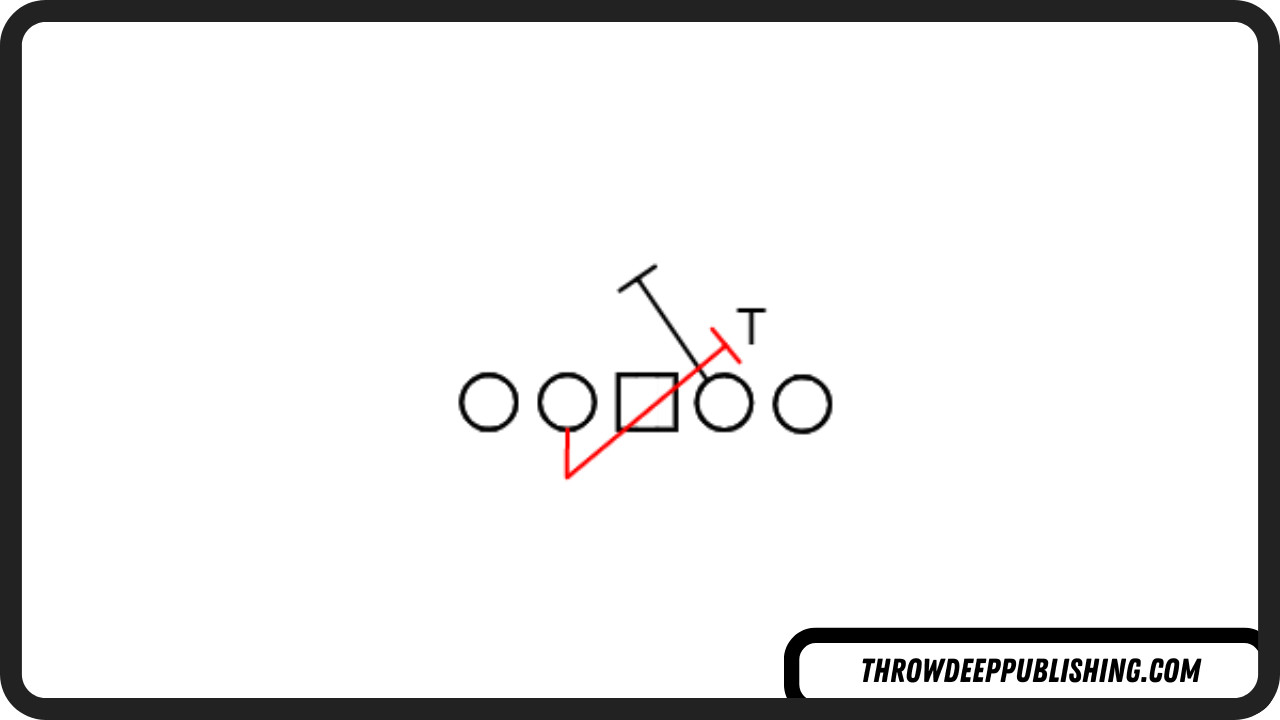 Trap Block
Trap Block
Usage: Trap blocks are typically used in plays like the Trap and Wham.
Example: In a trap play, the right guard may allow the 3-technique defensive tackle to go unblocked initially. Then, the left guard pulls and aims for the upfield shoulder of the defensive tackle while the center blocks back on the nose tackle. The running lane develops between these blocks.
2. Base Block
Definition: Base blocks are fundamental one-on-one blocks between an offensive blocker and a defensive player.
These blocks are essential in both the running and passing game. They require the blocker to establish and maintain inside leverage against the defender.
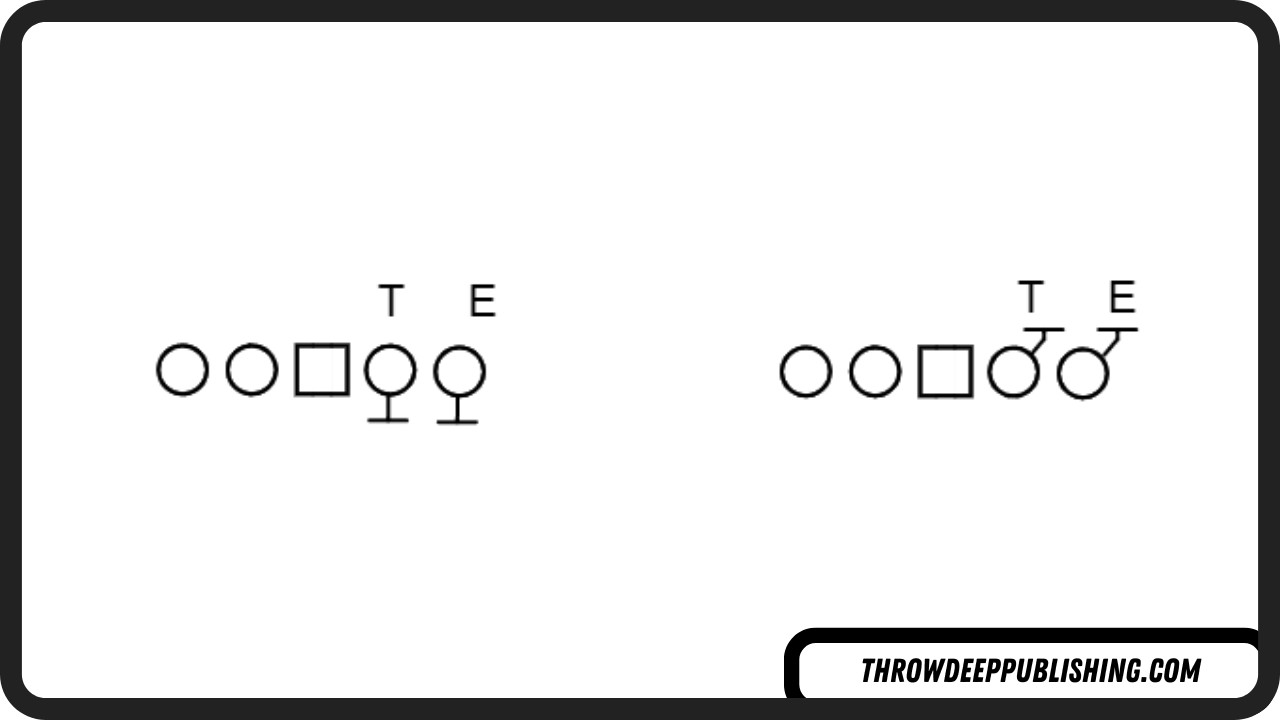 Base Block
Base Block
Usage: Base blocks are commonly used in situations where the blocker has no immediate help and must win the individual matchup.
Example: In half-slide pass protection, the left guard may be responsible for blocking the defensive tackle directly in front of him without any assistance. Similarly, in the run game, a right guard might be tasked with blocking a defensive tackle one-on-one on the front side of an inside zone play.
3. Reach Block
Definition: A reach block is designed to establish and maintain outside leverage on a defender, typically on the front side of a run play.
The blocker takes a 45-degree angle step at the snap, setting his hips on the same angle. The goal is to reach the outside shoulder (or “far point”) of the defender, preventing them from pursuing the ball carrier.
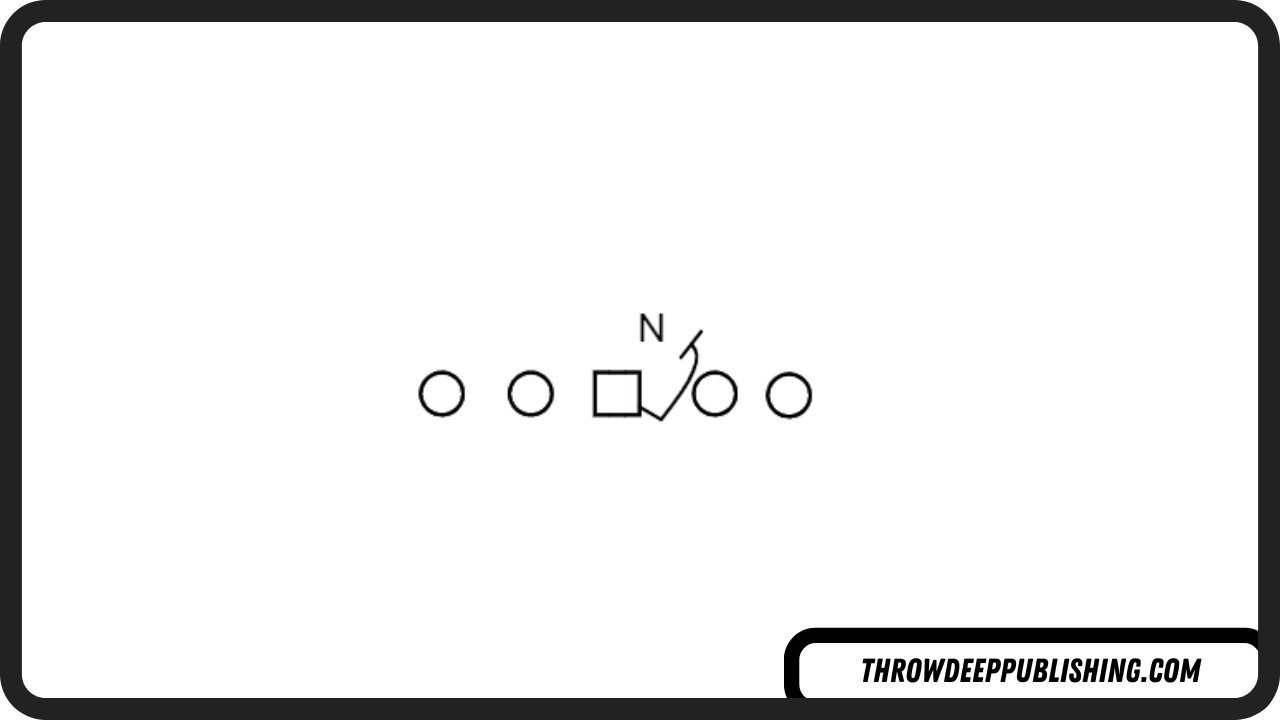 Reach Block
Reach Block
Usage: Reach blocks are primarily used on perimeter runs like outside zone plays.
Example: A center might execute a reach block on a nose tackle during an outside zone play. The center’s objective is to get his helmet to the far point of the nose tackle and maintain outside leverage, ensuring the nose tackle cannot disrupt the play.
4. Down Block
Definition: A down block is an angle block executed on an inside defensive lineman or linebacker on the frontside of a run play.
This block leverages the offensive player’s favorable pre-snap position to maintain leverage throughout the play. The blocker aims for the near shoulder of the defender while stepping at a 45-degree angle toward the defender.
 Down Block
Down Block
Usage: Down blocks are common in gap run schemes involving multiple down blocks and pulling linemen.
Example: A right tackle might block down on a 3-technique defensive tackle when the play is designed to run to the right side. The right tackle’s pre-snap leverage allows him to effectively block the defensive tackle away from the play.
5. Log Block
Definition: A log block occurs when an offensive lineman pulls and seals a defender inside of him to the frontside of the blocking scheme.
This block can be a reaction to a defender’s movement or a predetermined strategy. If the blocker cannot execute a kick-out block, they will instead pin the defender to their inside.
 Log Block
Log Block
Usage: Log blocks are often used on plays where the offense anticipates the edge defender will not allow a kick-out block.
Example: On a counter play, a guard pulls with the initial goal of establishing inside leverage on the edge defender. If the defender “wrong-arms” (penetrates inside), the guard switches to a log block, pinning the defender inside and allowing the play to proceed outside.
6. Pull
Definition: A pull is when an offensive lineman moves from their initial position to another spot to block, usually running around another offensive player.
This technique is used to gain a numbers advantage or a leverage advantage at the point of attack.
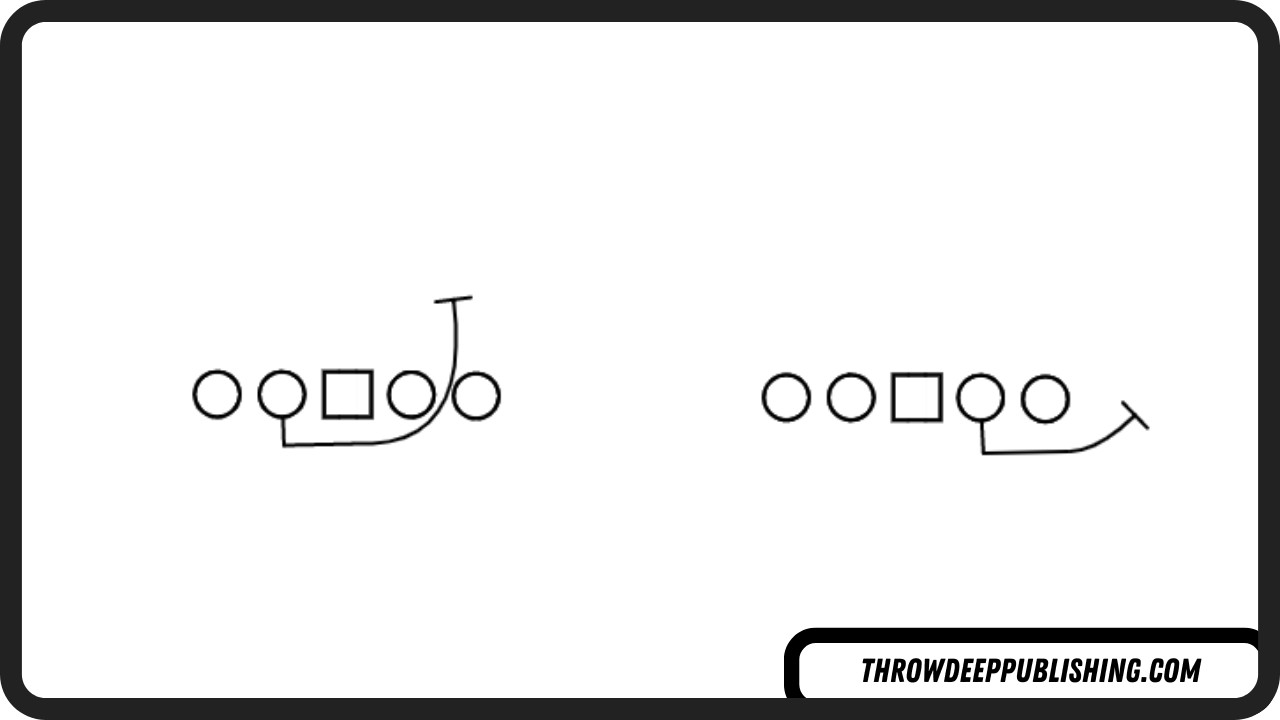 Offensive Lineman Pull
Offensive Lineman Pull
Usage: Pulling is common in power plays, counter plays, and sweep plays.
Example: In a power play, a guard might pull around the center and up through the B-gap to create an extra blocker at the point of attack. In a sweep play, a guard might pull around the tackle to get to the perimeter and block for the ball carrier.
7. Veer Block
Definition: A veer block involves the blocker taking a drop step with their inside foot and driving through the defensive front to reach the second level and block linebackers.
This block is primarily used in under-center triple option offenses.
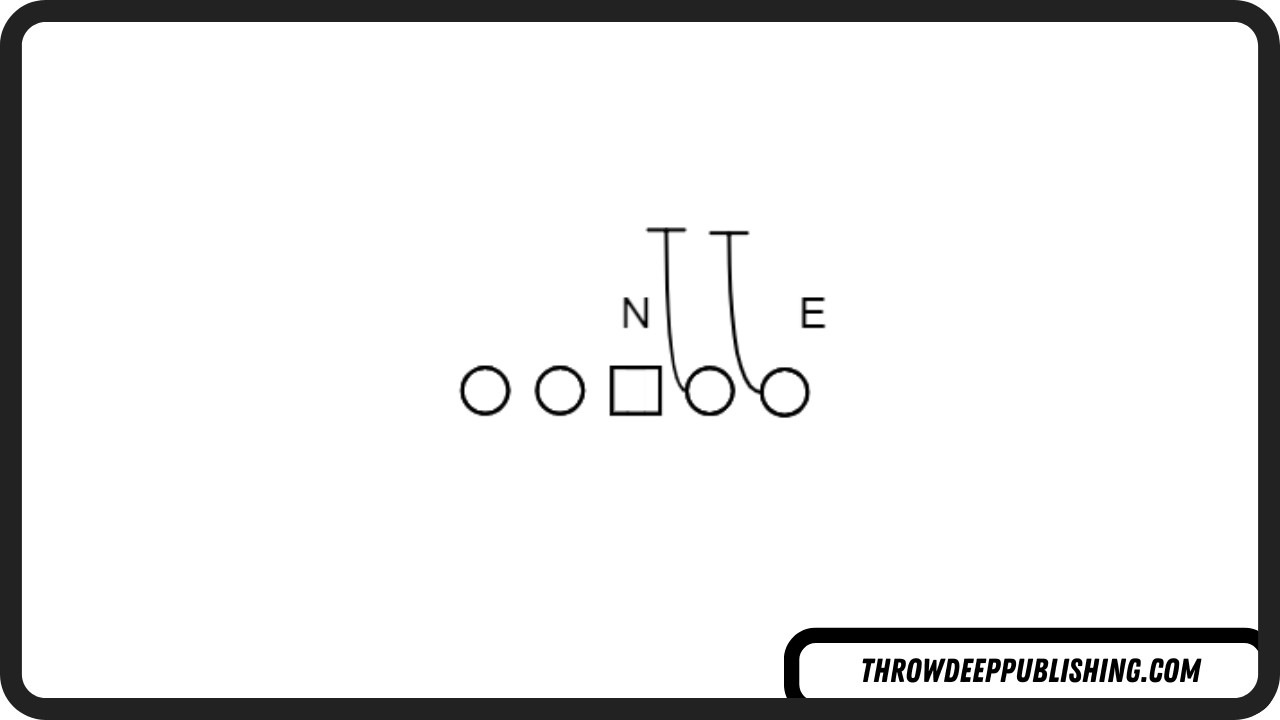 Veer Block
Veer Block
Usage: Veer blocks are commonly seen in teams like the military academies (Army, Navy, and Air Force).
Example: A right guard and a right tackle might execute veer blocks against an odd front. They take a drop step with their left foot and drive their right arm through the defensive front, climbing to the second level to block the linebackers.
8. Combo Block
Definition: A combo block involves two offensive linemen working together to block a first-level defender and then move to block a second-level defender.
This block can occur on the frontside or backside of a play, and on inside or outside runs.
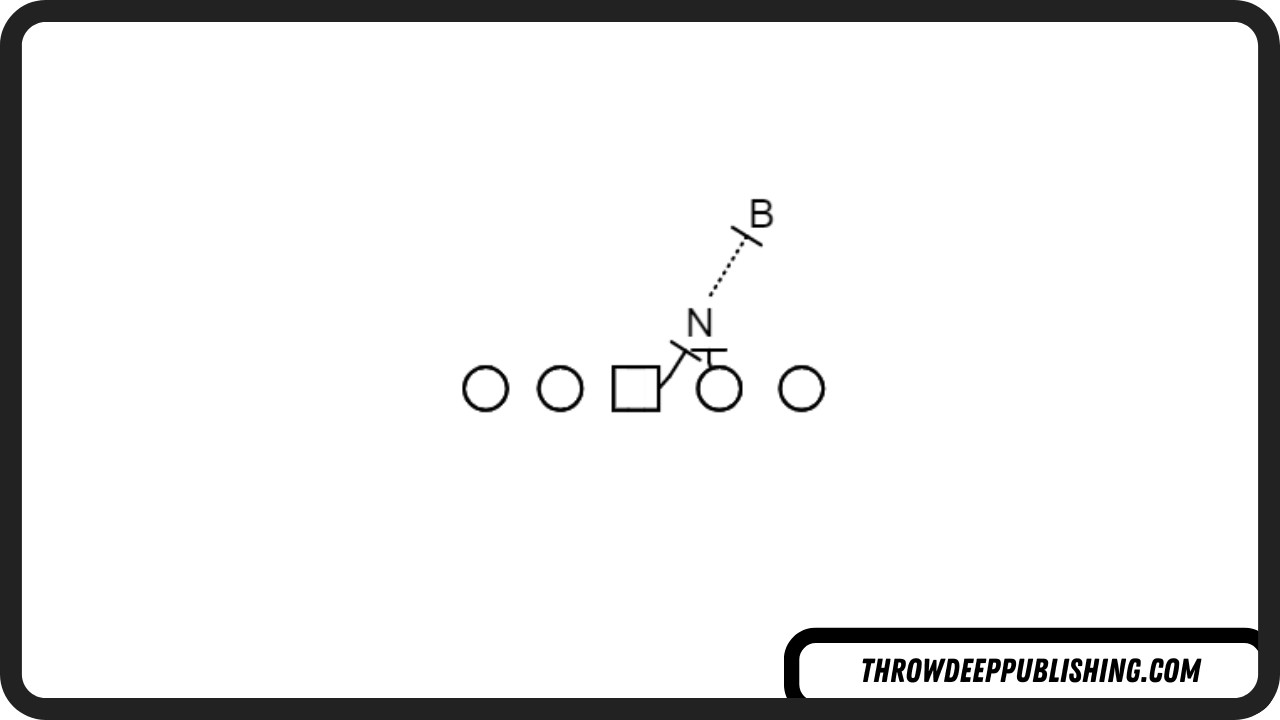 Combo Block
Combo Block
Usage: Combo blocks are versatile and used in various running schemes.
Example: A center and a right guard might combo block a nose tackle on an inside zone play. They work together to displace the nose tackle while keeping their eyes on the linebacker. One of them will peel off to block the linebacker based on the linebacker’s movement.
9. Drive Block
Definition: A drive block is a one-on-one block specific to the run game, where the blocker aims to drive the defender off the line of scrimmage.
The blocker must establish and maintain inside leverage on the defender throughout the play.
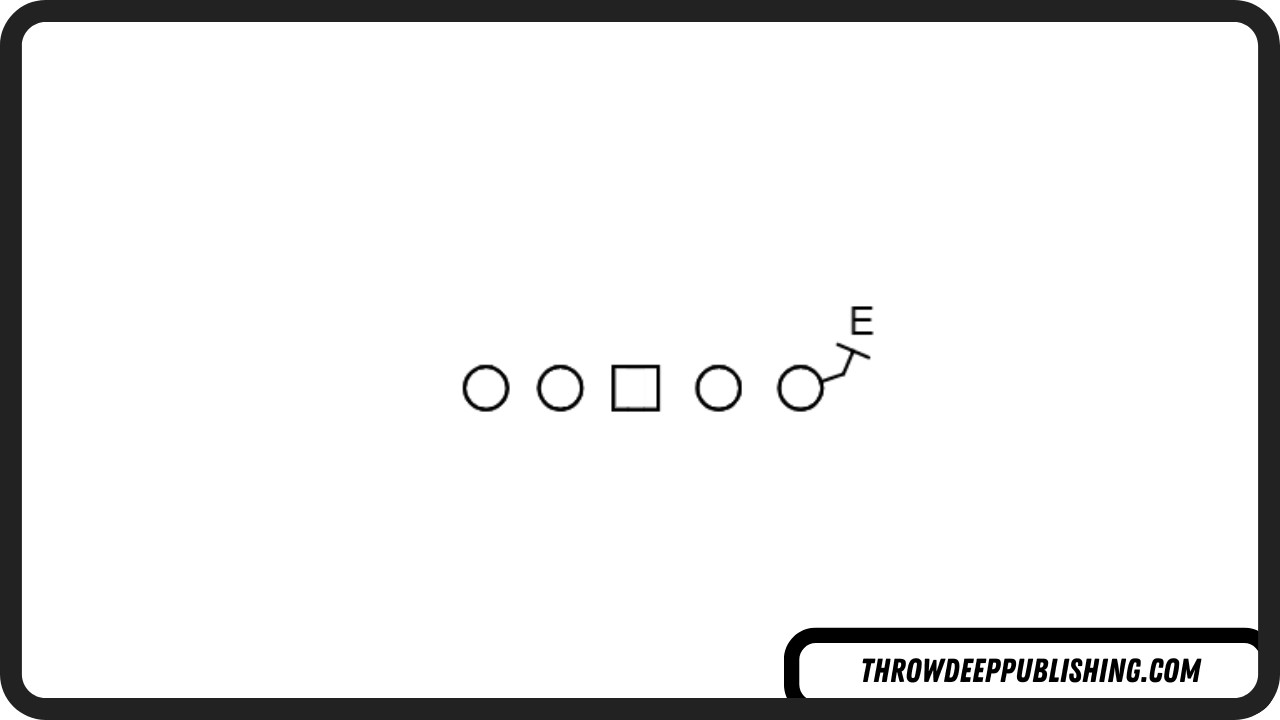 Drive Block
Drive Block
Usage: Drive blocks are used on inside runs where the blocker is responsible for a specific defender.
Example: A right tackle might execute a drive block on a defensive end on an inside run. The tackle can either drop step and immediately attack the defender or take an initial inside step to ensure inside leverage before attacking.
10. Double Team Block
Definition: A double team block is the initial phase of a combo block, where two offensive linemen work together to block a first-level defender.
The primary goal is to overpower the defender at the point of attack and move them off the line of scrimmage.
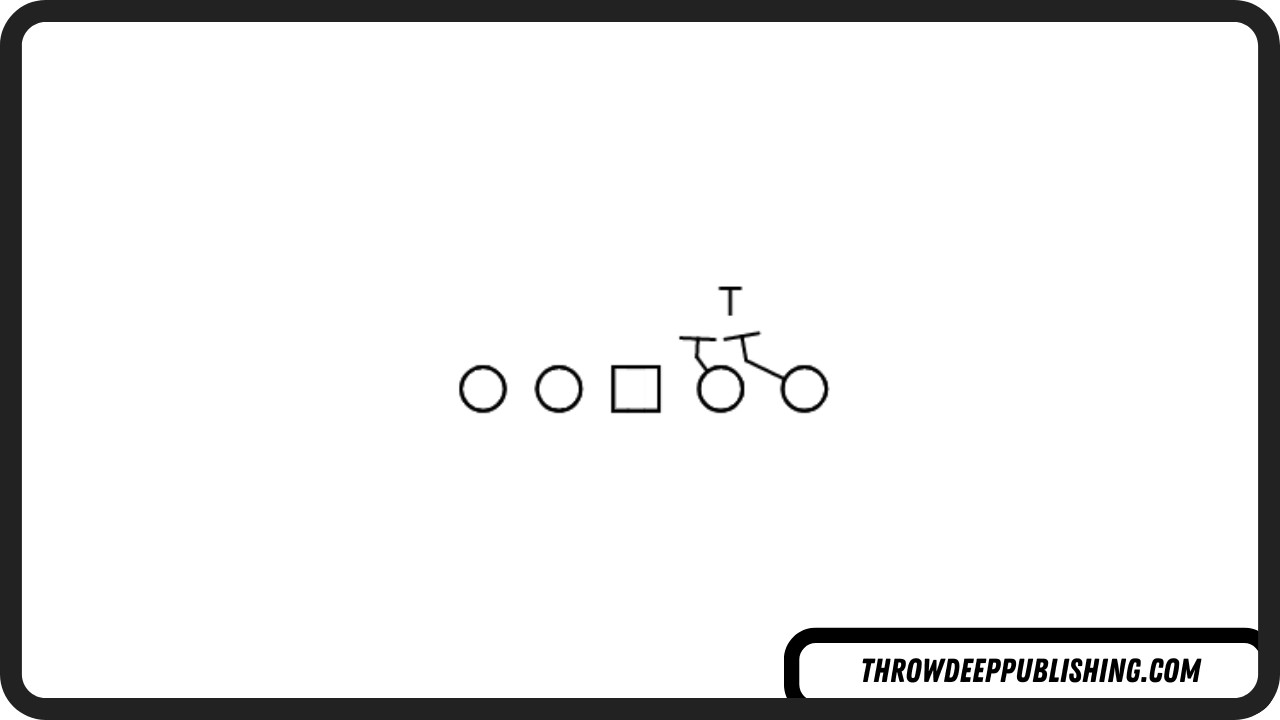 Double Team Block
Double Team Block
Usage: Double team blocks are common in offenses that emphasize overpowering the defensive line.
Example: A right guard and a right tackle might double-team a 3-technique defensive tackle. The guard (the “post player”) establishes initial contact, and the tackle (the “trail player”) adds to the double team.
11. Scoop Block
Definition: A scoop block is a specific type of combo block on the backside of a run play, aiming to gain leverage on the far point of both the first and second-level defenders.
This block is often seen in veer option offenses and zone runs.
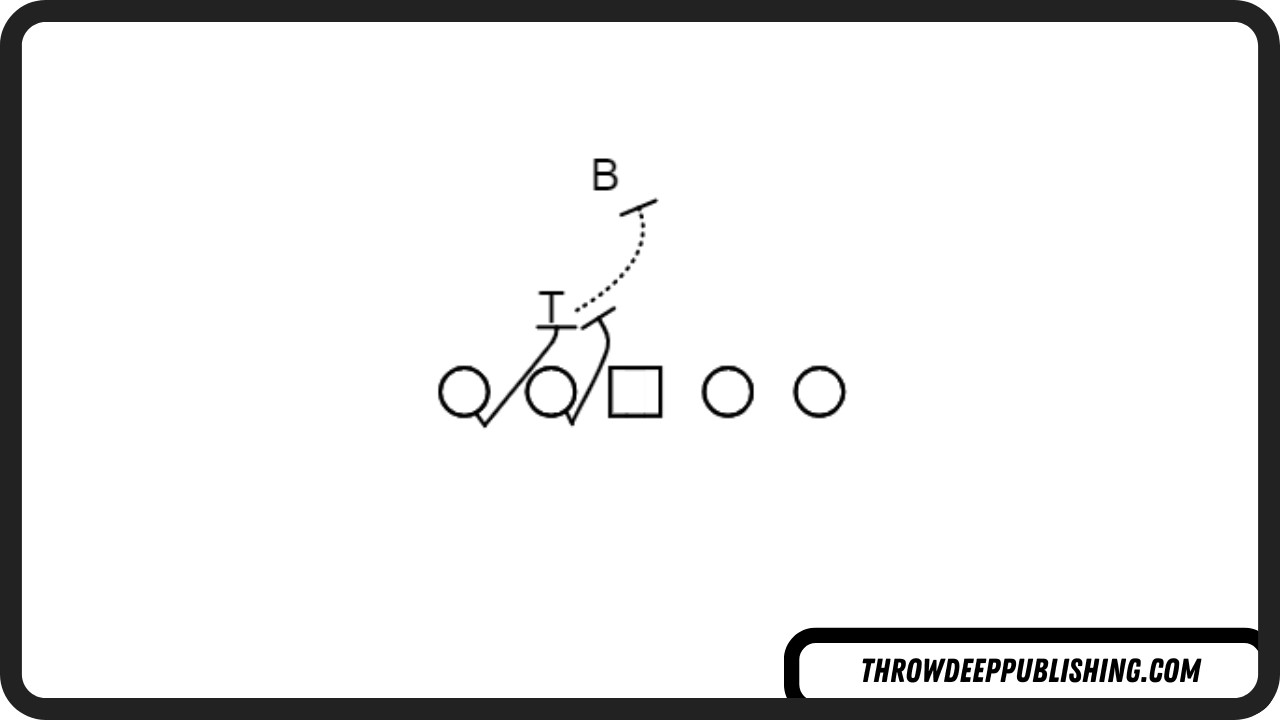 Scoop Block
Scoop Block
Usage: Scoop blocks are used to seal the backside and prevent defenders from pursuing the ball carrier.
Example: A left guard and left tackle might scoop block a defensive tackle to the linebacker. Both players take deep drop steps, with the guard establishing initial contact and the tackle taking over the defensive tackle, allowing the guard to climb to the linebacker.
12. Cut Block
Definition: A cut block involves diving at a defender’s legs to get them on the ground.
This block is used in both run and pass plays to disrupt the defender’s pursuit.
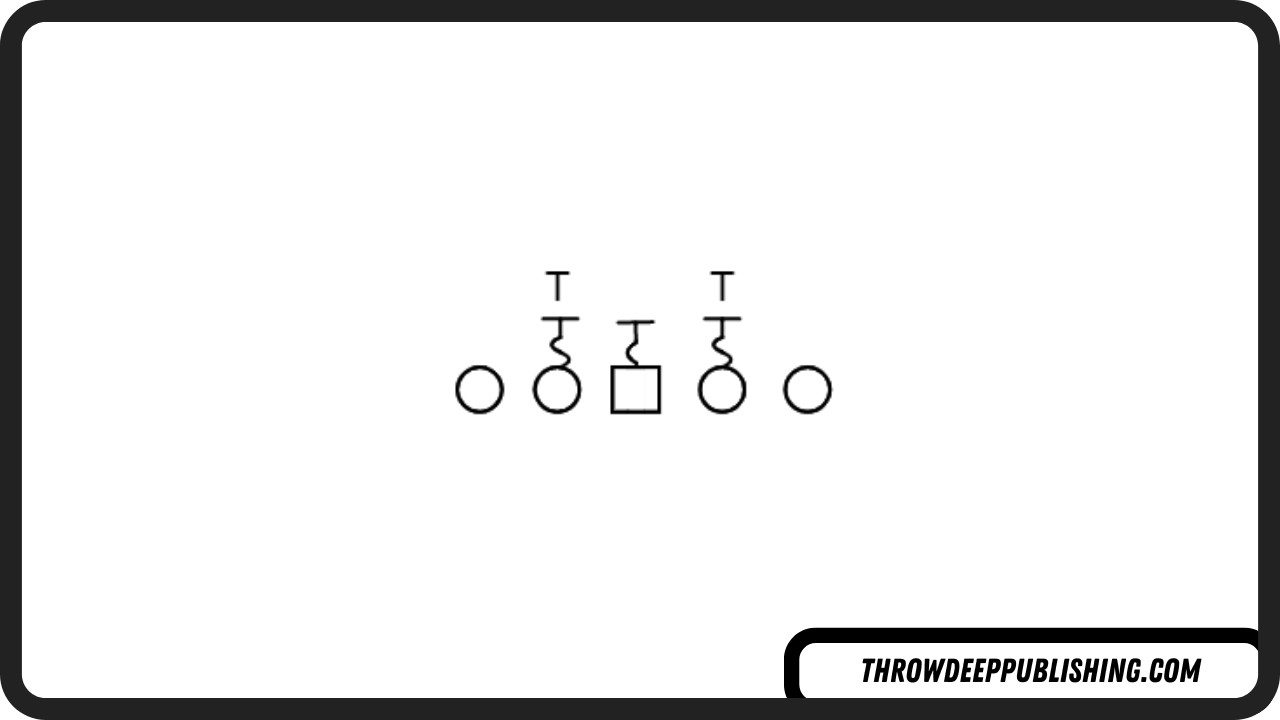 Cut Block
Cut Block
Usage: Cut blocks are often used to slow down pass rushers or stop pursuit at the line of scrimmage.
Example: Offensive linemen might use cut blocks to get defensive linemen’s hands down, allowing the quarterback to make a quick throw.
13. Crack Block
Definition: A crack block is where a perimeter player comes back toward the core of the formation to block an interior defender, such as a linebacker.
This block is common in perimeter runs and quick screen plays.
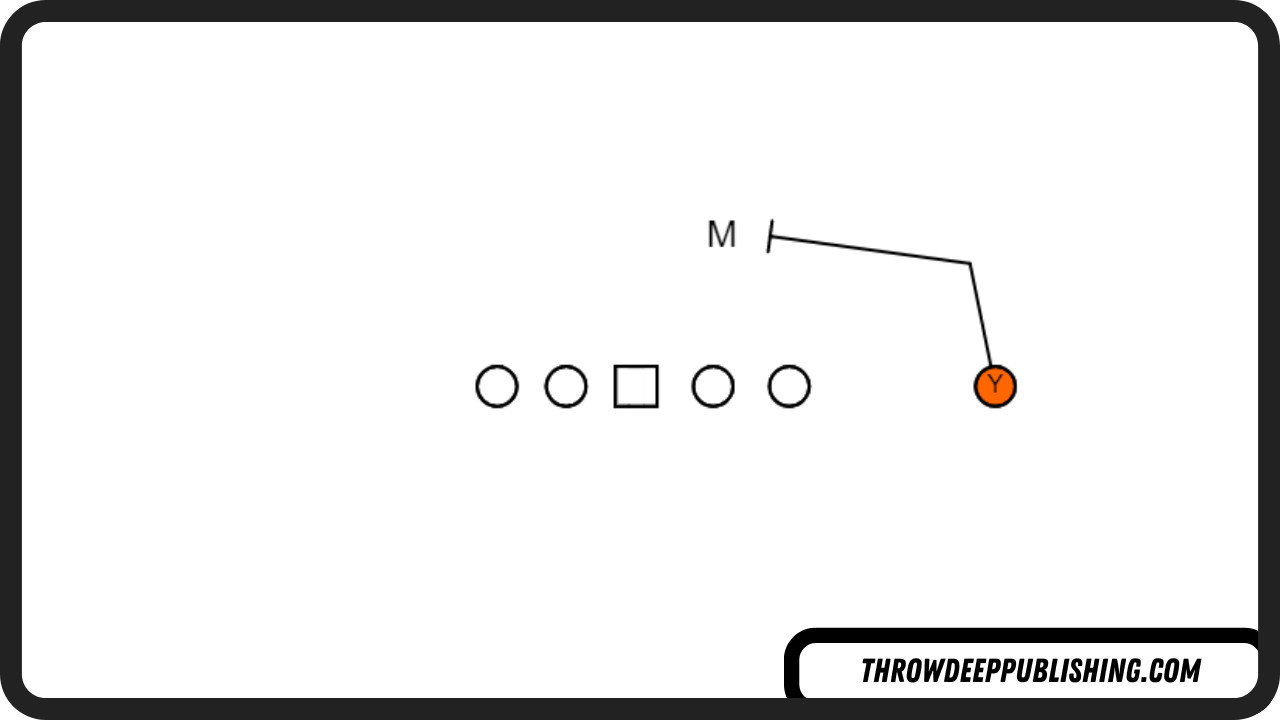 Crack Block
Crack Block
Usage: Crack blocks are often used in sweep plays and quick screen concepts.
Example: In a buck sweep play, a slot receiver might take an upfield departure at the snap but then immediately target the upfield shoulder of the linebacker in the box.
14. Kick Out Block
Definition: A kick-out block is similar to a trap block but occurs one gap wider outside of the tackle.
It requires a blocker to move across at least one gap to an edge defender, establishing and maintaining inside leverage on the run.
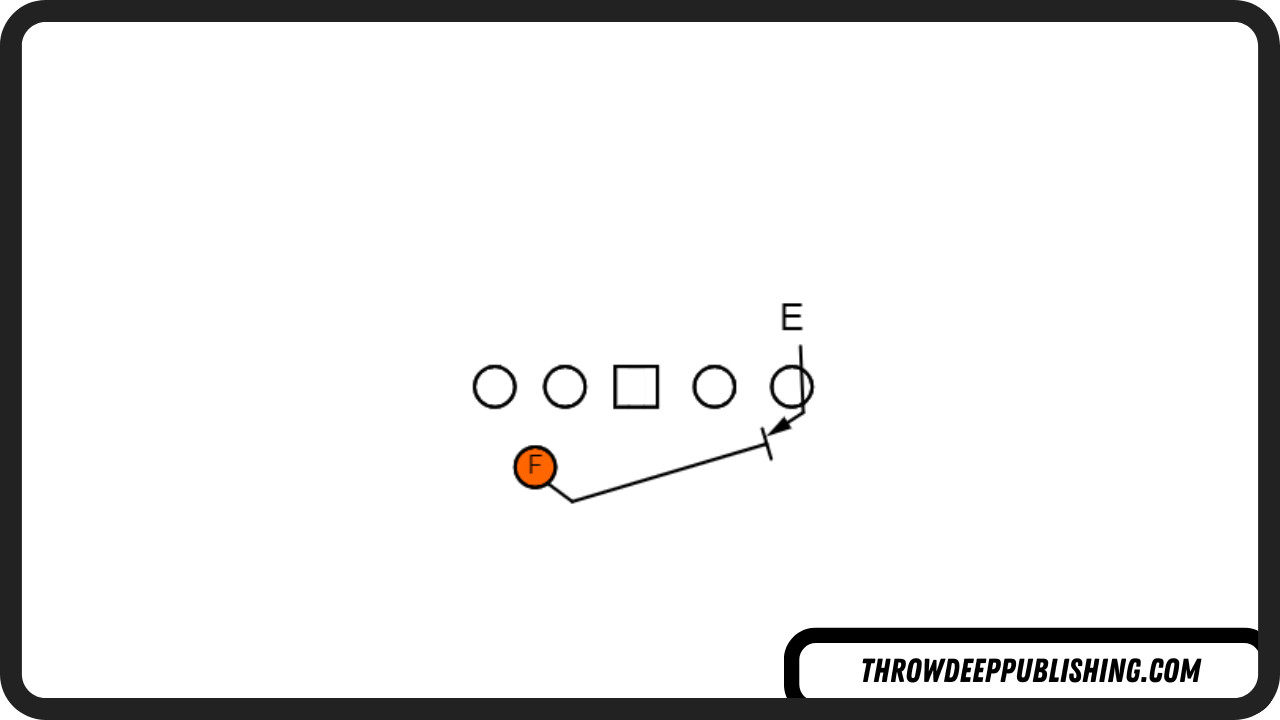 Kick Out Block
Kick Out Block
Usage: Kick-out blocks are commonly used on counter plays and split zone plays.
Example: A pulling guard on a counter play typically executes a kick-out block. In a split zone play, an H-back might come across the formation to perform a kick-out on the backside edge defender.
The Importance of Offensive Line Techniques
The offensive line is the backbone of any successful football team. Their ability to execute various blocking techniques effectively can significantly impact the outcome of a game. Different blocking schemes require different skill sets, and coaches must carefully select players who can excel in these techniques.
Key Attributes of Effective Offensive Linemen
- Strength: Offensive linemen need significant physical strength to move defenders off the line of scrimmage.
- Agility: Agility is crucial for executing blocks like reach blocks and pull blocks, which require quick footwork and the ability to move laterally.
- Technique: Proper technique is essential for all types of blocks. Linemen must understand the correct angles, hand placement, and footwork to be effective.
- Intelligence: Offensive linemen must be intelligent and able to read defensive formations, adjust to changes, and understand their assignments.
- Communication: Effective communication among the offensive line is vital for executing combo blocks and adjusting to defensive stunts and blitzes.
The Role of Coaching
Coaching plays a critical role in developing effective offensive linemen. Coaches must teach players the proper techniques, provide them with the knowledge to understand different blocking schemes, and help them develop the physical and mental attributes necessary to succeed.
The Future of Blocking
As football evolves, so do blocking techniques. Modern offenses are increasingly incorporating more complex blocking schemes that require offensive linemen to be more versatile and athletic. The emphasis on pass protection has also increased, with offensive linemen needing to be adept at pass blocking techniques to protect the quarterback from increasingly sophisticated pass rushes.
Understanding Penalties Related to Blocking
It’s essential to understand the penalties associated with illegal blocking. Penalties can negate positive plays and put the offense in difficult situations.
Common Blocking Penalties
- Holding: Illegally grabbing and impeding a defender. This is one of the most common offensive penalties.
- Clipping: Blocking an opponent from behind below the waist. This is a dangerous penalty that can cause serious injuries.
- Illegal Block Below the Waist: Blocking a player below the waist outside of the legal zone.
- Unnecessary Roughness: Using excessive force or targeting an opponent in a dangerous manner.
The Impact of Penalties
Penalties can have a significant impact on the outcome of a game. They can negate big plays, force the offense into long yardage situations, and give the defense an advantage. Teams that can minimize penalties are more likely to be successful.
How CAUHOI2025.UK.COM Can Help You Understand Football Better
At CAUHOI2025.UK.COM, we are dedicated to providing clear, accurate, and comprehensive information about football. Whether you’re a seasoned fan or new to the game, our resources can help you deepen your understanding and appreciation for this exciting sport.
Resources We Offer
- Detailed Articles: We offer in-depth articles on various football topics, including blocking techniques, offensive and defensive strategies, and player positions.
- Visual Aids: Our articles include diagrams and videos that help illustrate complex concepts and techniques.
- Expert Analysis: We provide expert analysis and insights from experienced coaches and players.
- Glossary of Terms: Our glossary of terms helps you understand the jargon used in football.
- Q&A Section: Our Q&A section allows you to ask questions and get answers from our team of experts.
Why Choose CAUHOI2025.UK.COM?
- Reliable Information: We provide accurate and up-to-date information from trusted sources.
- Comprehensive Coverage: We cover all aspects of football, from basic concepts to advanced strategies.
- Easy to Understand: We present information in a clear and easy-to-understand manner.
- Engaging Content: Our content is engaging and informative, making learning about football fun and enjoyable.
- Community Support: We offer a supportive community where you can connect with other football fans and experts.
Conclusion
Understanding the different types of blocks in football is essential for appreciating the complexities and nuances of the game. From trap blocks to crack blocks, each technique plays a crucial role in the success of the offense. By understanding these techniques, you can gain a deeper appreciation for the skill and athleticism of the offensive line and the strategic thinking of coaches.
At CAUHOI2025.UK.COM, we are committed to providing you with the knowledge and resources you need to become a more informed and engaged football fan. Explore our website to discover more articles, videos, and resources that will help you deepen your understanding of the game.
Ready to Learn More?
Do you have more questions about football blocking techniques or any other aspect of the game? Visit CAUHOI2025.UK.COM today to explore our comprehensive resources. Whether you’re looking for detailed explanations, expert analysis, or a supportive community, we have everything you need to enhance your football IQ. Don’t hesitate to contact us at Equitable Life Building, 120 Broadway, New York, NY 10004, USA or call us at +1 (800) 555-0199. Our team is here to help you unlock the secrets of football and elevate your fan experience. Discover football strategies with clear definitions and explore essential player techniques at CAUHOI2025.UK.COM.
Frequently Asked Questions (FAQs)
-
What is the most important block in football?
The importance of a block depends on the play being run, but base blocks and double team blocks are fundamental to many successful plays. Base blocks ensure one-on-one matchups are won, while double team blocks create significant push at the point of attack.
-
What is the difference between a trap block and a kick-out block?
A trap block involves leaving a defensive lineman unblocked and then blocking them from the side, while a kick-out block involves an offensive player moving to the edge to block a defender, creating a running lane inside.
-
Why is blocking technique so important in football?
Proper blocking technique ensures that offensive players can effectively create space for the ball carrier or protect the quarterback. Good technique minimizes penalties and maximizes the effectiveness of each block.
-
What are some common penalties associated with blocking?
Common penalties include holding, clipping, and illegal block below the waist. These penalties can negate positive plays and put the offense in difficult situations.
-
How can I improve my understanding of football blocking schemes?
You can improve your understanding by studying play diagrams, watching game footage, and reading articles and resources from reputable sources like CauHoi2025.UK.COM.
-
What is a combo block, and how is it executed?
A combo block involves two offensive linemen initially blocking one defensive lineman together and then one of the offensive linemen moving to block a linebacker at the second level. This requires coordination and communication between the two linemen.
-
What role does the offensive line play in pass protection?
The offensive line is responsible for creating a pocket for the quarterback to throw the ball. They use various pass-blocking techniques to prevent defensive players from reaching the quarterback.
-
What is the difference between inside and outside leverage in blocking?
Inside leverage means the blocker is positioned inside the defender, preventing them from moving inside. Outside leverage means the blocker is positioned outside the defender, preventing them from moving outside.
-
What is a cut block, and when is it used?
A cut block involves diving at a defender’s legs to get them on the ground. It’s often used to slow down pass rushers or stop pursuit at the line of scrimmage.
-
How do coaches teach offensive linemen to block effectively?
Coaches use a variety of drills, film study, and practice repetitions to teach offensive linemen proper blocking techniques. They also emphasize communication, teamwork, and understanding of different blocking schemes.
